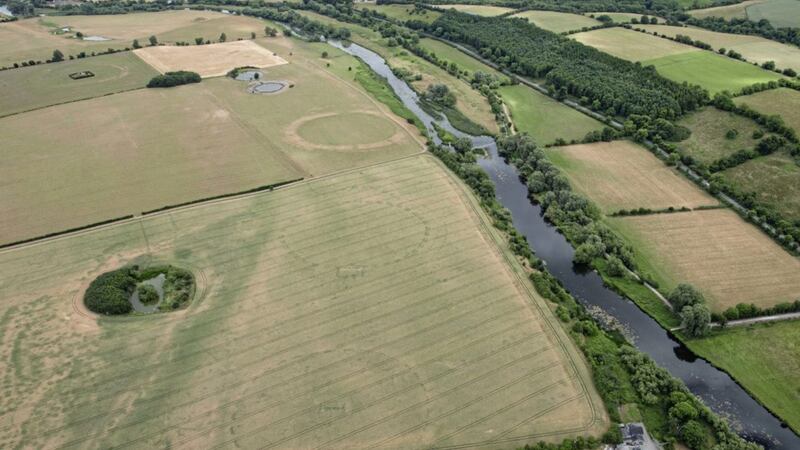THE Irish government has released new images of archaeological discoveries made in recent weeks across the Boyne Valley landscape and at Brú na Bóinne complex, a Unesco World Heritage site, in Co Meath.
Culture and heritage minister Josepha Madigan said she commissioned "further flights over the area" to capture images during the dry weather.
A 5,500-year-old megalithic tomb, unveiled last week, has been described as the "find of a lifetime" by archaeologists.
It was uncovered at the 18th century Dowth Hall, within the Brú na Bóinne complex.
Two burial chambers, six kerbstones and two suspected satellite tombs were amongst the monuments found during the dig.
A week before those discoveries were announced, a drone captured images of a previously uncovered henge close to the 5,000-year-old Newgrange monument, also in County Meath.
Although not confirmed, it is believed to be a late Neolithic or early Bronze Age enclosure.
Ms Madigan said: "The results, which are still being analysed by the National Monuments Service, are simply awe inspiring."
"It will take some time to fully understand the place and relevance of these archaeological features and to comprehend the scale of what was clearly a very advanced civilisation.
"I am putting some further images into the public domain. These illustrate the secrets this landscape has held for thousands of years and which the recent spell of dry weather has revealed for us."







